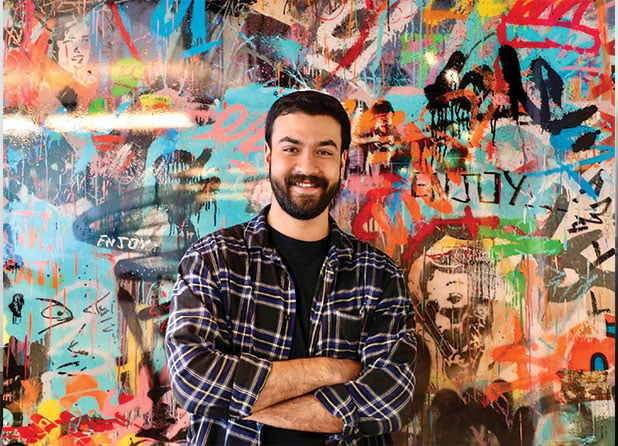Karim ElGohary, e-commerce executive at OMG Transact eCommerce MENA lays out a roadmap to engage with online consumers.
MENA consumers are amongst the most digitally connected in the world, with 99 per cent mobile penetration, 3.5 hours a day on average spent online and interaction with more than eight social media platforms during any given month. So how can we best influence consumers from the online discovery phase through to transaction to drive business results? Here are five key ways to connect discovery with transaction.
1. Winning in search on Amazon
As an online business, if you’re not leveraging Amazon to sell products then you’re not just missing out on the opportunity to profit through sales but also limiting your access to a wealth of data. Each month more than 215 million users access Amazon globally to discover and purchase new products, and this number increases with key seasonal events such as Cyber Month. Amazon is the window to your brand as more than 60 per cent of product discovery now begins on Amazon globally, so it’s essential to be present to be considered in the path to purchase.
2. Facebook collaborative ads and shops
This performance-marketing format enables brands who don’t have their own e-commerce-enabled website to activate prospecting and remarketing campaigns in collaboration with leading retailers in the region like Noon and Mumzworld. This solution enables brands to target audiences on Instagram and Facebook and drive them seamlessly to the point of purchase.
Brands can engage with audiences who have browsed their product catalogue or pages, added their item to a basket or purchased. Now brands can even target audiences who visited the total category within the retailer environment to focus on building engagement and sales from new shoppers.
If you have your own e-commerce-enabled platform you can scale awareness of your offering on Facebook Shops and Instagram shopping, tapping into the 60 per cent of global users who discover new brands and products through social. Facebook Shops provides brands with the opportunity to stand out visually in users’ newsfeeds and helps drive conversions with successful targeting through to the point of purchase.
3. Live shopping via Snapchat and TikTok
China is a proof case for the success of live shopping, which resulted in a CAGR of more than 280 per cent between 2017 and 2020 to reach an estimated $171bn in 2020. Live shopping is when a brand leverages live streaming solutions to highlight its product range, new product releases or limited-time offers, encouraging action towards a purchase.
Social platforms such as Snapchat and TikTok are taking charge in this domain by experimenting with their platforms’ capabilities to attract users by offering a much-shortened shopper journey.
Snapchat just recently announced its Creator Marketplace, which allows brands to connect with influencers and hosts to create product-focused augmented content and experiences for its users. Users access their favourite influencers’ stories and posts and through Screenshop can identify the products that their influencers are using without having the influencer mention it, thus removing any friction within the user’s shopping journey.
TikTok has been testing pilots with retailers, primarily in the US, when it comes to live-stream shopping, and the results seem to show great promise. How it works is that TikTok will host a virtual event (livestream) where products will be displayed, allowing users the opportunity to purchase through the stream seamlessly. Walmart is the only large-scale retailer in the US that TikTok has partnered with, with the collaboration netting seven times the number of predicted views. It grew Walmart’s following by 25 per cent and resulted in a total of two events being hosted by the retailer.
4. Conversational commerce
Conversational commerce leverages communication channels such as WhatsApp, Facebook Messenger and Live Chat solutions to engage with consumers on a personal level and drive them through the funnel to purchase using AI or chatbot-powered tools and trained customer service agents. Conversational commerce can be integrated on a reactive basis supporting consumer queries on product queries, shopping experience, customer service and general brand enquiries, alongside a proactive basis by triggering conversations with website visitors to encourage conversion to purchase with shopper incentives and product recommendations.
Just look at Facebook’s collaboration with L’Oréal. The platform saw great success with L’Oréal Malaysia during a 12-hour virtual beauty festival on Facebook Live using conversational commerce to engage and convert purchases. The results were outstanding, with more than a month of sales achieved in 24 hours.
5. Buy-it-now media formats
Shoppable media formats are set to become the fastest-growing advertising category, with growth of 40 per cent in 2020. Shoppable media formats enable users to engage directly with the display or video advertisement and seamlessly add the advertised products to baskets, reducing friction in the path to purchase. Adimo has a range of solutions to optimise your communications from discovery to purchase.
Businesses that optimised their path to purchase or integrated shopability into media formats have seen an increase in conversion rates by as much as 42 per cent. Now is the time to invest in unlocking communication plans that clearly link discovery through to purchase to unlock incremental sales growth online in 2022.
This article was first published in Campaign Middle East.



